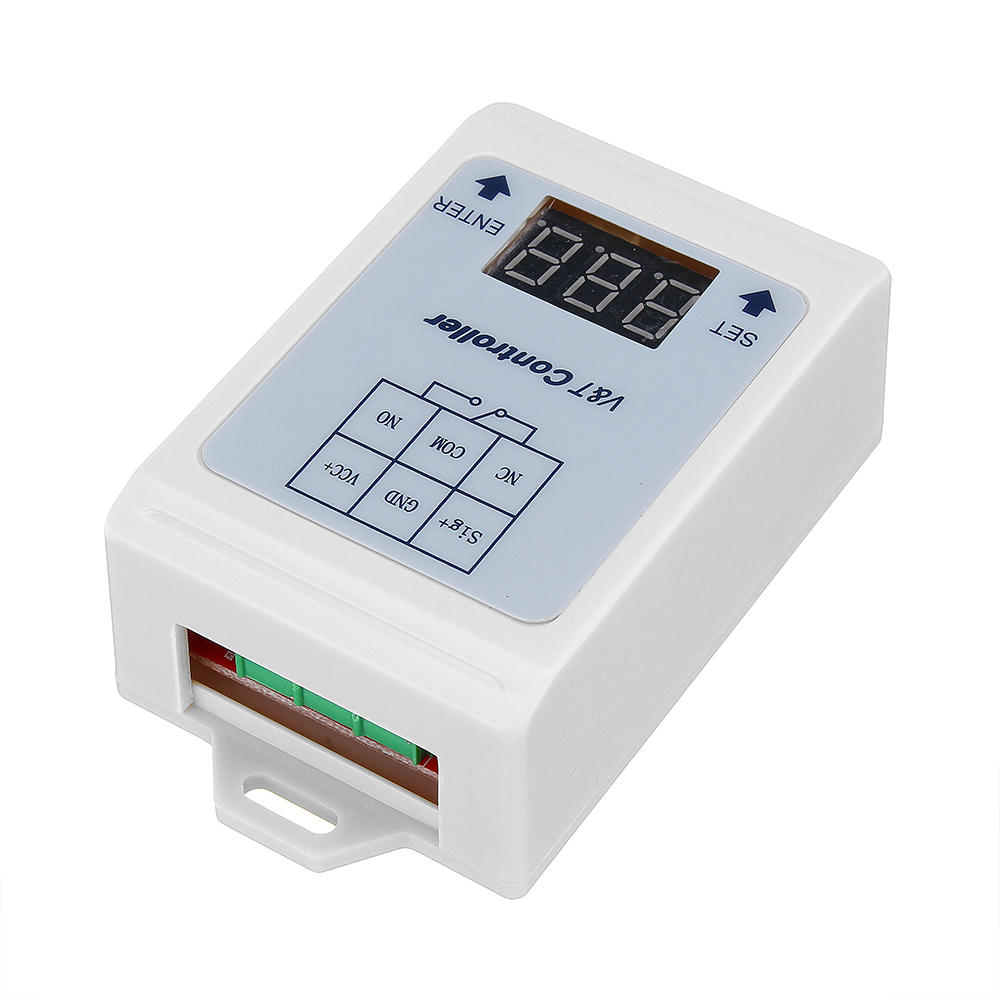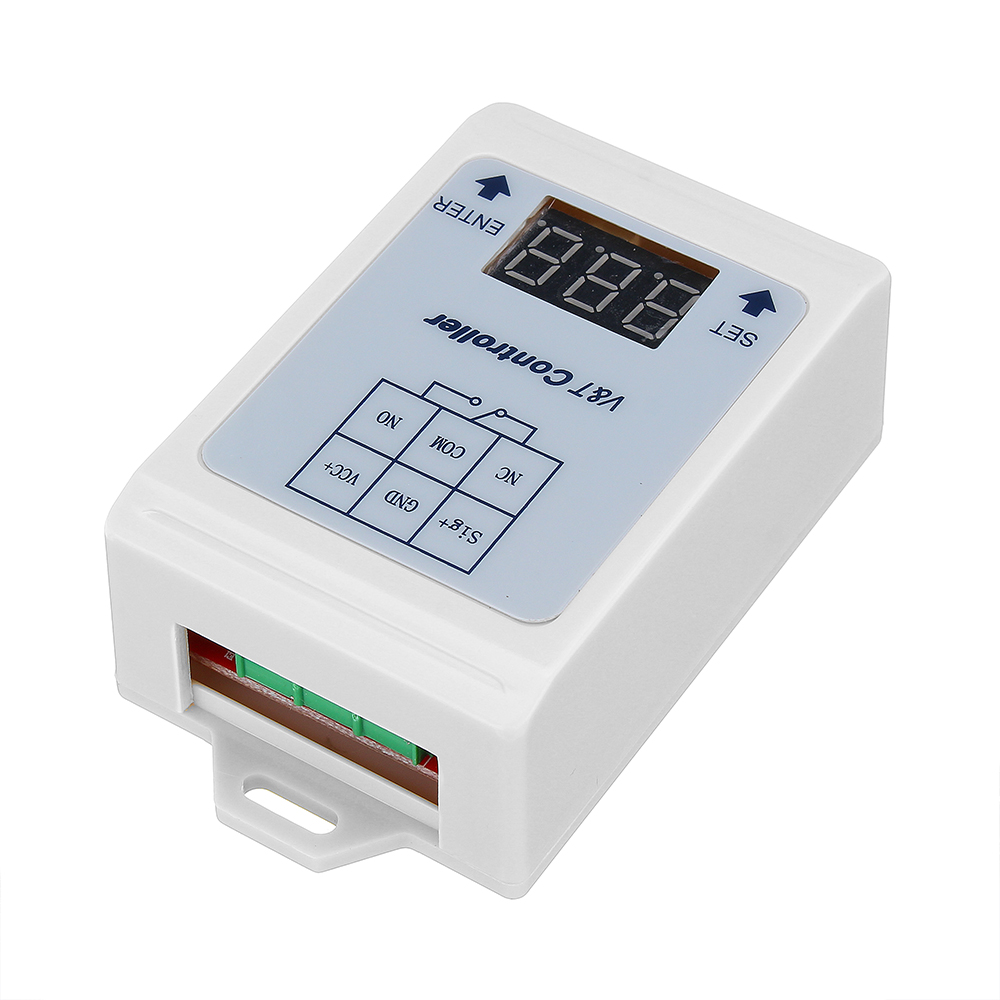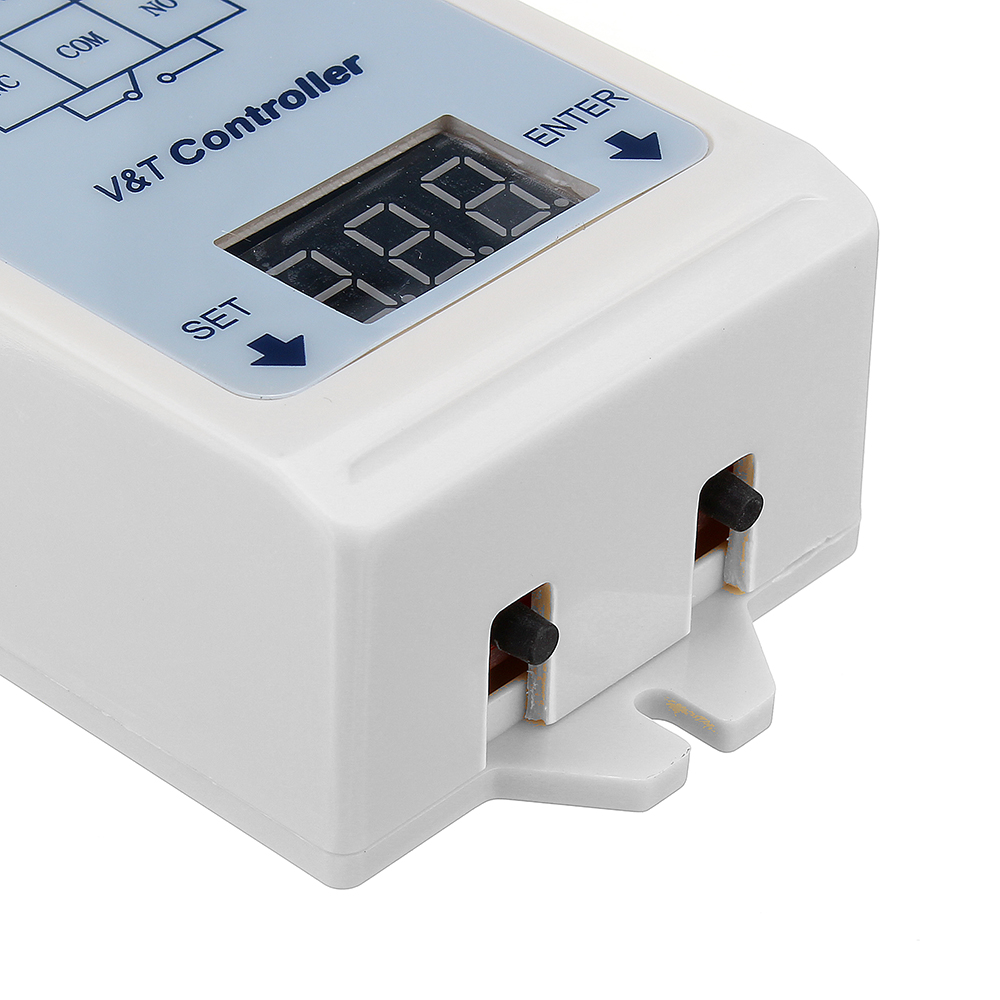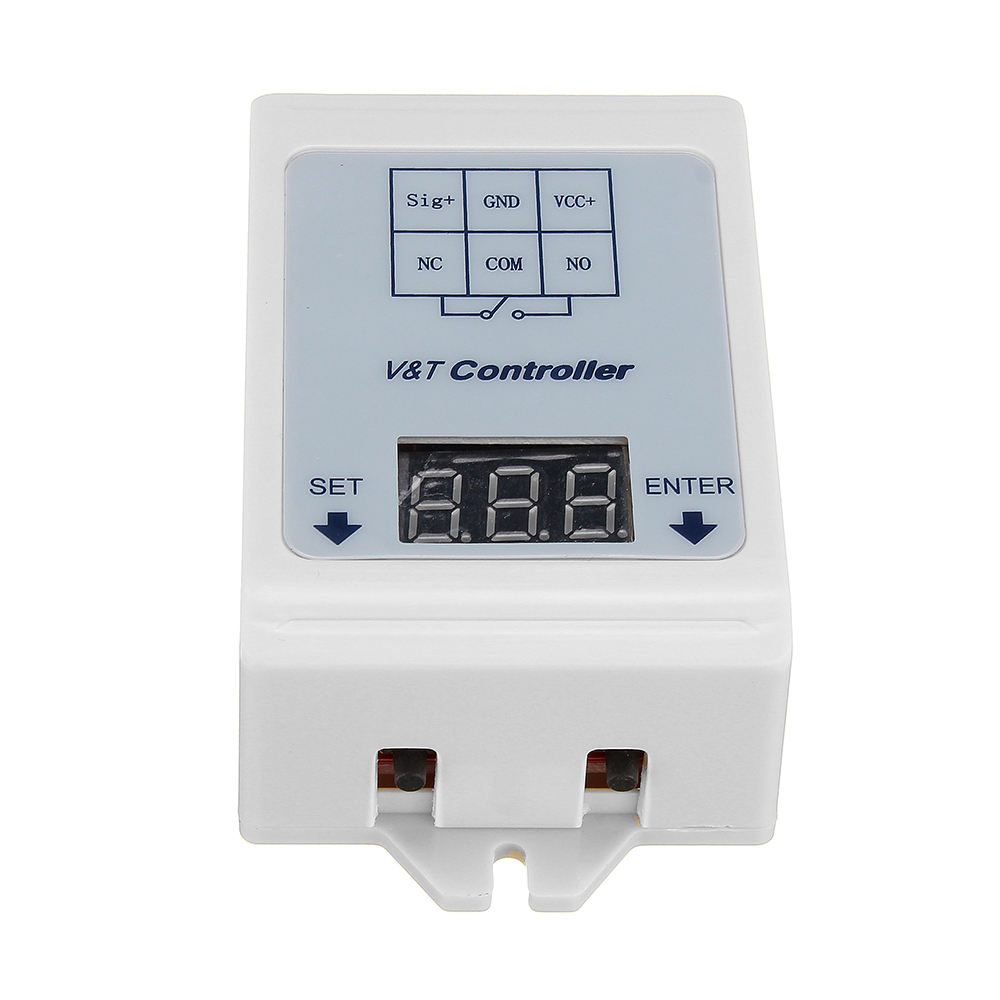Price:
US$13.59
Free Shipping
DC7-35V 16 Functions 1 Channel Relay Module Delay Cycle Timing With Digital Display And Shell 


Compatibility
To confirm that this part fits your vehicle, please enter your vehicle's details below.
-
Year:
Select
-
Make:
Select
-
Model:
Select
-
Submodel:
Select
-
Trim:
Select
-
Engine:
Select
- Clear All
This part is compatible with 0 vehicle(s).
Show all compatible vehicles
Show all compatible vehicles
This part is compatible with 1 vehicle(s) matching
This part is not compatible with
Recent searches
- Year
- Make
- Model
- Submodel
- Trim
- Engine
Features:
1. Perfect shell combination, beautiful appearance, excellent workmanship, advanced technology, super cost-effective.
2. Four-digit time display, delay countdown display, support 0.1S-99.9S and 1S-999S time switch.
3. With relay output normally open normally closed contact output.
4. Working voltage DC7V-DC35V wide voltage.
5. Support switch trigger, high level trigger, PNP normally open three-wire sensor trigger mode.
6. Built-in 16 function modes, users can switch freely and perfectly.
Specification:
1, working power: DC7-35V
2, timing range: 0.1-99.9S and 1-999 seconds two delay range, can be switched on the board
3. Standby current: 15mA/12V, minimum 10mA/12V when the relay is disconnected, 30mA/12V when the relay is closed;
4, working environment temperature: -40 ~ 85 ° C;
5. Size: 96x54mm
6, relay parameters:
Contact load: DC30V/10A, AC250V/10A set of normally open normally closed conversion
Contact contact resistance: 100mRMax
Contact suction and time: 10msec Max
Contact release time: 5msec Max
Coil and contact isolation voltage: 1.5KVAC/1minute
Isolation impedance: 100MR Min. 500VDC
Contact mechanical durability: >10 million times
7. Various mode setting parameters can be saved after power off, and the last mode execution is continued after power-on.
Package Included:
1 x 1 Channel Relay Module
Functional Mode:
[Function 1]:
After the trigger action, the delay is disconnected: the relay does not operate after the module is energized, and a trigger signal is input. The relay immediately pulls in. When the pull-in time T1 arrives, the relay is disconnected. If the input signal is always present, the module will not repeat the action. Give the signal after the signal is disconnected.
[Function 2]:
After the module is energized, the relay does not operate, and a trigger signal is input. The relay is immediately closed. After the delay T1, the relay is disconnected. If the pulse signal is sent again during the delay, the timing is cleared and the relay is not disconnected.
[Function 3]:
After the trigger action, the delay is disconnected: the relay does not operate after the module is energized, and a trigger signal is input. The relay is immediately closed. When the pull-in time T1 arrives, the relay is turned off. During the delay, the TRIG terminal signal relay is immediately turned off. open.
[Function 4]:
The trigger action signal disappears and the delay is disconnected: the relay does not operate after the module is energized, and a trigger signal is input. The relay immediately pulls in. When the TRIG signal is kept, the relay is always engaged, and the delay is started after the signal disappears. The delay time T1 arrives. After the relay is disconnected, when there is a signal in the delay time, the timer will be re-timed and the relay will not be disconnected.
[Function 5]:
Trigger delay pull-in: The relay does not operate after the module is energized, input a trigger signal, delay the T1 time relay to pull in, repeat the TRIG interface number, repeat this function.
[Function 6]:
Trigger delay pull-in: After the module is energized, the relay does not work, and the input signal is continuously given until the delay time T1 is reached, the relay is closed, the signal disappears after the relay is closed, and the relay is immediately disconnected. The relay is not closed and re-timed. Repeat the signal to the interface and repeat this function.
[Function 7]:
There is signal closure, no signal disconnection: input to the continuous signal, the relay closes immediately, the signal disappears, the relay is disconnected.
[Function 8]:
Delayed power-on: delay after the module is energized. T1 time relay is closed, input a trigger signal, repeat this function.
[Function 9]:
Delayed power-off: After the module is energized, the relay will immediately pull in. When the delay is delayed, the relay will be disconnected, and a trigger signal will be input to repeat this function.
[Function 10]:
Timing and re-opening: Module power-on, delay T1. Relay pull-in, pull-in time T2 to after relay is disconnected, give a trigger signal, repeat the above function.
[Function 11]:
Timing disconnection and re-sucking: After the module is energized, the relay will immediately pull in. After the delay T1 arrives, the relay will be disconnected. After the disconnection time T2 arrives, the relay will be closed, and a trigger signal will be input to repeat this function.
[Function 12]:
Cycle timing mode 1: After the module is energized, the relay does not pick up. After the delay time T1 arrives, the relay is closed. When the pull-in time T2 arrives, the relay is disconnected. When the set cycle number N is reached, the operation stops. When N is 0, the limit is infinite. cycle.
[Function 13]:
Cycle timing mode 2: After the module is energized, the relay will immediately pull in. After the delay time T1 arrives, the relay will be disconnected. After the disconnection time T2 arrives, the relay will be closed. When the set number of cycles N is reached, the operation will stop. When N is 0, it will be infinite. cycle.
[Function 14]:
Trigger cycle timing mode 1: After the module is energized, the relay does not pull in. When the signal is continuously applied, the relay delay time T1 arrives and then pulls in. After the pull-in time T2 arrives, the relay is disconnected. When the set cycle number N is reached, the stop is stopped. Work, when N is 0, the loop is infinite. The signal in the middle suddenly disappears and the relay is immediately disconnected.
[Function 15]:
Trigger cycle timing mode 2: After the module is energized, the relay does not pull in. When the signal is continuously applied, the relay immediately picks up. After the delay time T1 arrives, the relay is disconnected. After the disconnection time T2 arrives, the relay is closed. When the set cycle is reached. When the number of times N, the work stops, and when N is 0, the loop is infinite. The signal suddenly disappears and the relay is immediately disconnected.
[Function 16]:
Self-locking relay mode: input a trigger signal, the relay is closed, and then a trigger signal is input, the relay is disconnected, the signal is continuously given, and the relay is alternately closed and disconnected.



